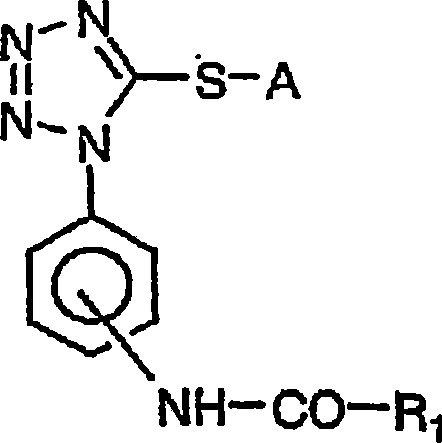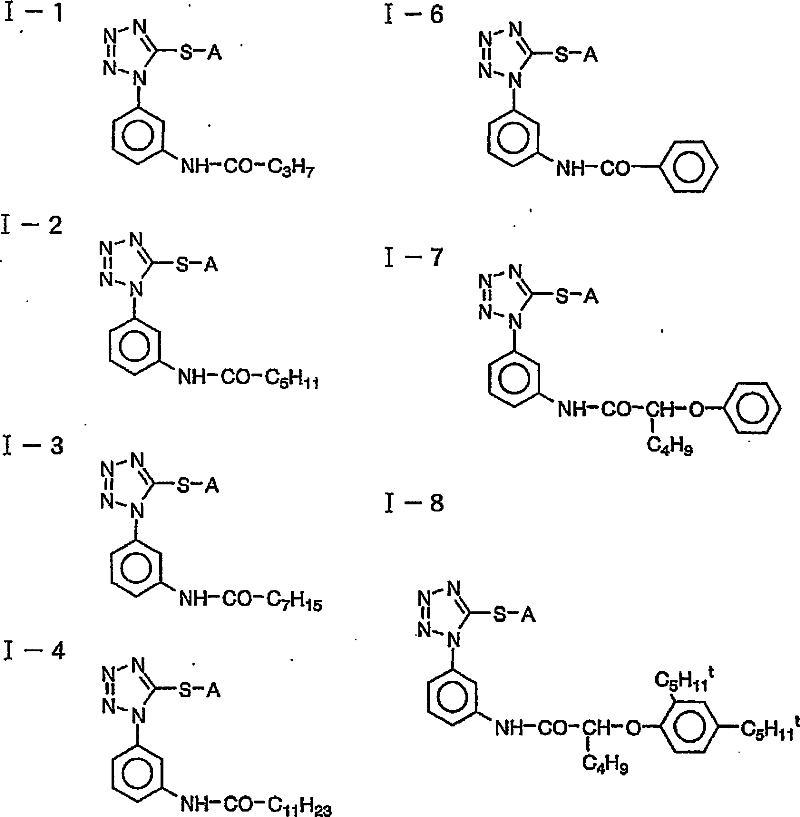Silver halide color photosensitive material and method of processing the same
A photosensitive material, silver halide technology, applied in photosensitive material, color reduction process, emulsified silver emulsion, etc.
- Summary
- Abstract
- Description
- Claims
- Application Information
AI Technical Summary
Problems solved by technology
Method used
Image
Examples
Embodiment 1-1
[0250] Embodiment 1-1 (preparation of sensitive blue layer emulsion BH-1)
[0251] High chloride cubic silver grains were prepared using simultaneous addition of mixed silver nitrate, sodium chloride, and potassium bromide (0.5 mole percent per mole of finished silver halide) to stirred deionized distilled water containing deionized gelatin. In this preparation, K 2 [IrCl 5 (5-methylthiazole)]. From the step of adding 82% to 90% of the total amount of silver nitrate, start adding K 4 [Fe(CN) 6 ]. In addition, from the step of adding 83% to 89% of the total amount of silver nitrate, start adding K 2 [IrCl 5 (H 2 O)] and K[IrCl 4 (H 2 O) 2 ]. At the step where 94% of the total amount of silver nitrate was added, potassium iodide (0.27 mol% per mole of silver halide completed) was added with vigorous stirring. The emulsion grains thus obtained were monodisperse cubic silver bromide chloride grains having a side chain length of 0.50 μm, a coefficient of variation of 8....
Embodiment 1-2
[0548] (Preparation of Blue Sensitive Silver Halide Emulsion Grains BH-4)
[0549] To a 2% limed aqueous gelatin solution was added 1.2 g of sodium chloride and the pH was adjusted to 4.3 by adding acid. This aqueous solution was mixed with an aqueous solution comprising 0.025 moles of silver nitrate and a total of 0.025 moles of sodium chloride and potassium bromide at 41° C. under vigorous stirring. An aqueous solution containing 0.005 mol of potassium bromide was then added thereto, followed by an aqueous solution containing 0.125 mol of silver nitrate and an aqueous solution containing 0.12 mol of sodium chloride. The resulting solution was heated to 71°C and mixed with an aqueous solution containing 0.9 molar silver nitrate, an aqueous solution containing 0.9 molar sodium chloride, and 2.5×10 -7 moles of iridium compound, K 2 [IrCl 5 (5-methylthiazole)] while maintaining a pAg of 7.3. Over 5 minutes, an aqueous solution containing 0.1 mol of silver nitrate and an aque...
Embodiment 2-1
[0565] (Preparation of blue sensitive layer emulsion BH-11)
[0566] High chloride silver cubic grains were prepared by simultaneously adding mixed silver nitrate, sodium chloride, and potassium bromide (0.5 mol% per mole of finished silver halide) to deionized distilled water containing deionized gelatin. In this preparation, K is added in a step where 60% to 80% of the total silver nitrate is added 2 [IrCl 5 (5-methylthiazole)]. Add K in steps where 80% to 90% of the total amount of silver nitrate is added 4 [Fe(CN) 6 ]. In addition, K was added in the step of adding 83% to 88% of the total silver nitrate 2 [IrCl 5 (H 2 O)] and K[IrCl 4 (H 2 O) 2 ]. After 94% of the total amount of silver nitrate had been added, potassium iodide (0.27 mol% per mole of silver halide completed) was added under vigorous stirring. The emulsion grains thus obtained were monodisperse cubic silver bromide chloride grains having a side chain length of 0.50 μm, a coefficient of variation ...
PUM
 Login to View More
Login to View More Abstract
Description
Claims
Application Information
 Login to View More
Login to View More - R&D
- Intellectual Property
- Life Sciences
- Materials
- Tech Scout
- Unparalleled Data Quality
- Higher Quality Content
- 60% Fewer Hallucinations
Browse by: Latest US Patents, China's latest patents, Technical Efficacy Thesaurus, Application Domain, Technology Topic, Popular Technical Reports.
© 2025 PatSnap. All rights reserved.Legal|Privacy policy|Modern Slavery Act Transparency Statement|Sitemap|About US| Contact US: help@patsnap.com



